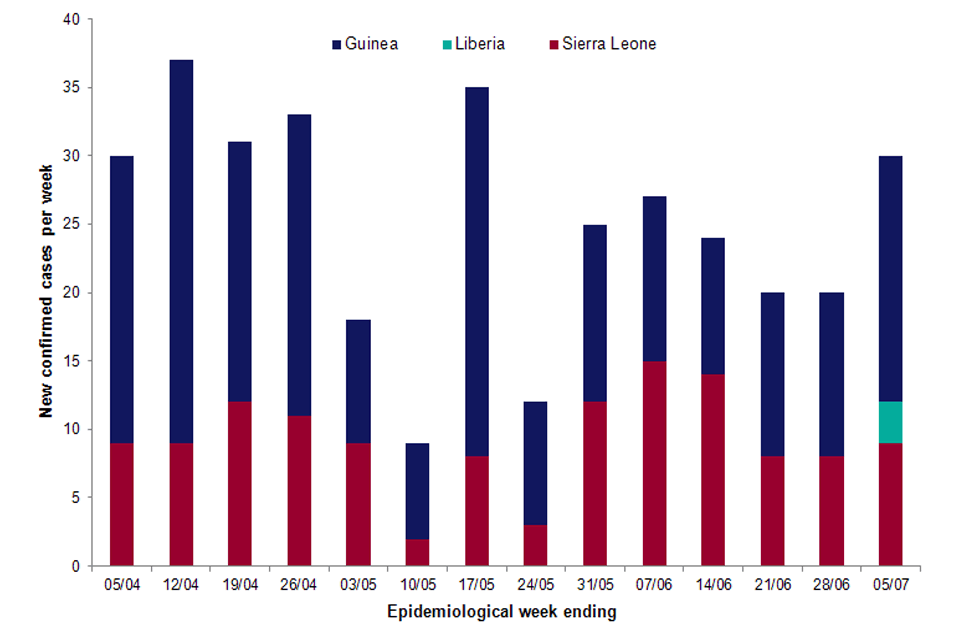HPR volume 9 issue 24: news (10 July)
Updated 29 December 2015
1. Infections among people who inject drugs in 2014
Updated data tables for the Unlinked Anonymous Monitoring Survey of People Who Inject Drugs have been published by PHE [1] and a full commentary article on the data is included in the infection reports section of this issue of Health Protection Report [2].
The UAM-PWID survey measures the prevalence of antibodies to HIV, hepatitis C and hepatitis B – as well as levels of risk and protective behaviour – in the PWID population. The survey covers England, Wales and Northern Ireland, and data is presented at country level and for the English regions.
Overall, the data from the survey show that infections remain a problem among people who inject drugs. The data indicate that, in 2014, 1.0% of people who inject psychoactive drugs were living with HIV, and that 49% had antibodies to hepatitis C. The survey also found that 14% had ever been infected with hepatitis B (that is, had antibodies to the hepatitis B core antigen) and 0.58% had current hepatitis B infection (HBsAg). Overall, 17% of those currently injecting had shared needles and syringes during preceding the 28 days, and injecting drugs into higher risk sites on the body, such as the groin and hands, was also common. Although uptake of diagnostic testing for HIV and hepatitis C – and of the hepatitis B vaccine – are all high, the uptake of these interventions has not increased in recent years.
The HPR commentary concludes that interventions which aim to prevent infection through injecting drug use, including needle and syringe programmes [2] and opiate substitution therapy [3], need to be sustained.
1.1 References
- PHE statistics webpages (July 2015). Data tables of the Unlinked Anonymous Monitoring Survey of People Who Inject Drugs (psychoactive).
- Unlinked anonymous HIV and viral hepatitis monitoring among PWID: 2015 report, HPR 9(24): HIV-STIs.
- NICE (April 2004). Needle and syringe programmes: providing people who inject drugs with injecting equipment, Public Health Guidance, PH52.
- DH (England) and the devolved administrations (2007). Drug misuse and dependence – guidelines on clinical management: update 2007.
2. Ebola virus disease: international epidemiological summary (at 5 July 2015)
The Ebola Virus Disease (EVD) outbreak in West Africa continues with between 10 and 30 cases reported each week from currently affected areas. As of 5 July 2015, a total of 27,609 clinically compatible cases of EVD and 11,261 deaths have been reported associated with the West African outbreak.
In the last week, a total of 30 confirmed cases of EVD were reported, 18 in Guinea, three in Liberia and eight in Sierra Leone, an increase from 20 confirmed cases in the previous week (see figure). The geographical distribution of cases in Guinea and Sierra Leone has stabilised in recent weeks but individuals evading quarantine continue to present a risk of seeding further outbreaks.
On 9 May 2015, the outbreak of EVD in Liberia, which began in March 2014, was declared over. However, on 28 June 2015, the first case of EVD in Liberia since 20 March 2015 was reported. As of 5 July, this localised outbreak in Margibi county has resulted in three confirmed cases and one probable case. This new outbreak is currently being treated as a separate incident from the main outbreak. The source of infection for this cluster of cases remains unknown and investigations continue.
A lack of community engagement with EVD control measures continues to hamper tracing and monitoring of contacts and thus cessation of transmission chains.

Number of new confirmed cases reported per week (5 April to 5 July 2015) in affected countries in West Africa
Further information on the epidemiological situation can be found in PHE’s weekly Ebola epidemiological update and from the Ebola Outbreak Distribution Map.
